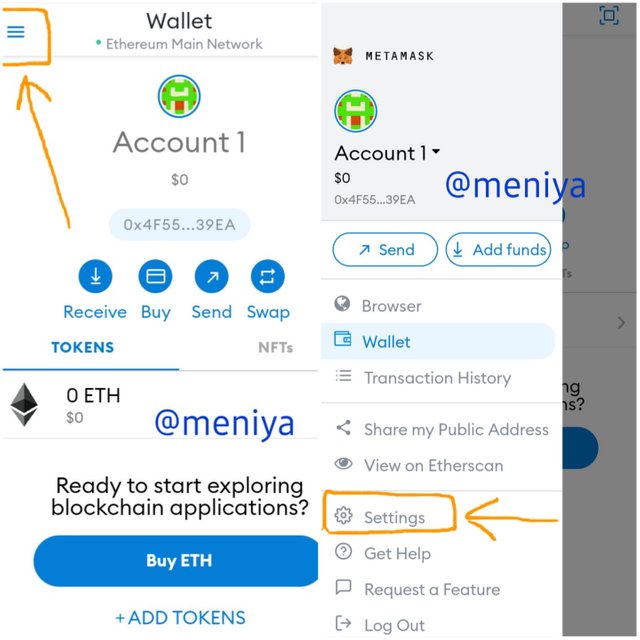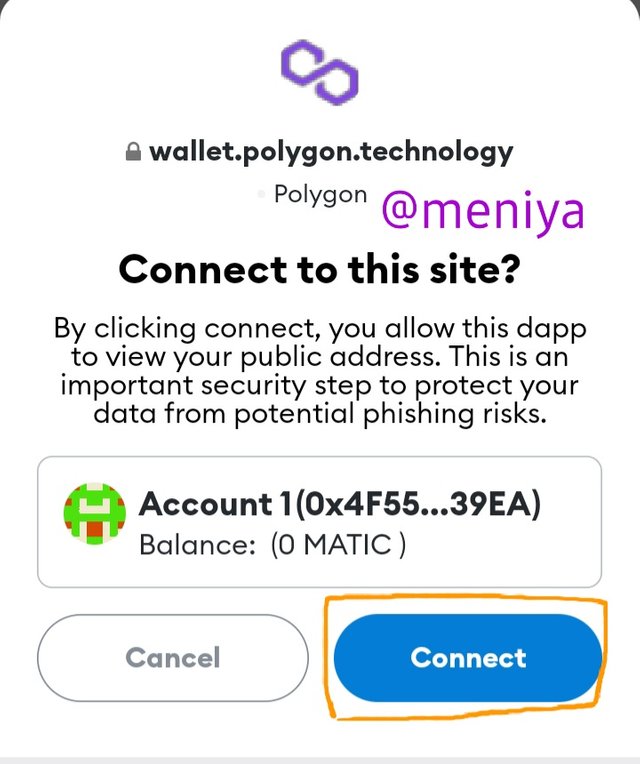Sidechains - Crypto Academy / S4W8 - Homework post for pelon53
Hello crypto world, glad to be part of this week's class by professor @pelon53 on "Sidechains". Below is my task post. Thank you.

1.- Explain in detail the Sidechains with the use of ZK-Rollups.
Sidechains are reffered to as alternative blockchain, that acts are complimentary to an original blockchain known as main blockchain. Sidechain serves as a link to other blockchains in which users of both blockchain (sidechain and main blockchain) are able use their tools to communicate with each other and transfer or exchange assets between both blockchains, through a two-way peg connection process.
Sidehains are new mechanisms built in order to solve scalability and saturation problems of the already existing blockchains. Although, sidechains are complimentary nd compatible to the mainchain, they are not independent as they still depend on a main blockchain to form that link of connection that permits the free movement of assets between two blockchains to enhance interoperability. With sidechain one is able to move a token back to it's original chain via a two-way peg process. Sidehains utilize different set of rules, security pattern and enables new functionality that has security trade offs.
Sidechains as an alternative blockchain, with different types of nodes, blocks and validating processes. For a sidechain to be created, the introduction of an off-chain process is required to transfer data or assets between two blockchains. The two-way peg mechanism of transferring assets or data between two blockchains, can be used in a centralized exchange and a decentralized exchange.
For instance, Patricia as a user of centralized exchange has BTC but wants to exchange her BTC for ETH, there will be an exchange of her BTC for ETH using the BTC-ETH pair. Although, a centralized exchange demands a third-party authorization, increased risk and intermediary charge.
For instance, Meniya wants to make a transfer of 5BTC from the Bitcoin network to a sidechain (using decentralized exchange), she first needs to send the 5BTC to a particular lockbox address on the Bitcoin network. And once a Bitcoin is in the lockbox, it is automatically removed from the total supply of Bitcoin for the main time. The transaction is withheld for a few minutes, once the transaction is received and verified on the Bitcoin network and it is confirmed and added to the blockchain, the sidechain lockbox then releases the 5 BTC and sends it to the designated address on the Bitcoin network transaction. It is important to note that this transaction is reversible, to send the BTC back to the original blockchain you simply reverse the processes and the transfer process are well secured and safe.
Sidechains as an emerging protocol, within its six years of existence in crypto space has been able to resolve the issues of other blockchains and also have some notable projects such as; RSK, Lisk, Liquid etc. some examples of sidechain are; Drive chain, Polygon and SmartBCH. Sidechain has some notable characteristics which include; Providing scalability and security of main chain network, Provides interoperability, serves as an experimental and upgradibilility tool, that permits the test running of new ideas and deployment in the main chain, Prevents saturation in the main blockchain and most of all Serve as bridge between two blockchains.
ZK-Rollups simpy means Zero Knowledge or ignorant Rollups, it is a second layer protocol of sidechain, that helps mitigate scalability problems, improve transactions speed and reduce the cost of transactions to the barest minimum. As a sidechain technology, it improves scalability problems as an independent technology without depending on the main blockchain. This scalability issue is solved, by storing all data in an alternate network, once the data storage space reaches its limit, it is compressed (via the second layer protocol) and been sent to the main blockchain, hence preventing saturation in the blockchain and reducing the expensive cost of commissions, as seen with the high commissions cost experienced in Bitcoin and Ethereum blockchain, hence ZK-Rollups helps solve the problem of high commissions seen in other blockchains.
ZK-Rollup is built out of the integration of zk-SNARK cryptographic tests and the Rollup, making it a highly secured sidechain technology that gurantees anonymity of its users and prevents any malicious attack on the blockchain. ZK-Rollups allows transactions to be made outside of a main blockchain and once the transaction is initiated the main chain verifies the transaction through some transactions process that the ZK-Rollups sends to the main chain. In a nutshell, zk-rollups is a layer-2 scalability solution to the existing scalability problems with other blockchains, it helps blockchains validate transactions faster and ensures a reduced transaction gasfee the transaction.
The operation of zk-Rollups requires two users; transactors and relays.
The transactors are the users who create and execute a transactions(a transfer of assets or signing of smart contracts) towards to the network, and when the transaction is received on rhe network it is arranged via the merkle tree.
While, the relays are those responsible for taking all the transactions from the network and groups the transactions in Rollups to generate a zk-snask with a unique hash.
Operation of Zk-Rollups

Image made by me with Microsoft word
Zk-rollups usually consists of Merkle Trees that consists of only the most vital data of the smart contract or transfers and provides much output information than the layer-1 solutions. Thus making the Layer-2 solutions, specifically zk-rollups, a more preferred solution for small investors and traders. Some notable pros and cons of ZK-Rollups include;
Pros
• Helps in saving large amounts of processing power and time for each transactions on the blockchain.
•Increase scalability by reducing the amount of the blockchain’s capacity(compressing the transaction) used for validating
•Gas fees are reduced, with low commission fees.
Cons
•Requires more data optimization for maximum throughput.
•Transaction records are reflected in the main configuration.
•The use of quantum computing process can lead to hacking in blockchains
A variety of blockchain networks or sidechains that utilizes ZK-rollups include;
StarkWare, ZKSync, Loopring, Aztec, Hermez etc.
2.- Explain the Liquid Network side chain
Liquid Network is a sidechain network that allows settlements of transactions with use of a blockchain sidechain, it enables a fast, reliable and annoymous Bitcoin transactions and exchanges efficiently. Liquid Network was created by Blockstream and launched in 2017, as a side chain protocol, which aims to improve the time of Bitcoin transactions, as it is a bit slow but it's transaction cost is high. The invention of Liquid Network has been a great relief to it's users, as it helps with their exchanges, provides a much faster transactions when using the liquid network and of recent the use of liquid Network is on a high side.
One unique concept of Liquid Network is its ability to provide an improved noticeable high transaction speed. With liquid Network, Bitcoin transfers occurs in less than two minutes as compared to the 10 minutes it takes for transactions to occur in the Bitcoin blockchain. Liquid Network also support for smart contracts intelligent, that allows for the integration of stable coins and tokens.
The Liquid Network operates on a two-way peg mechanism as a sidechain that it is, Liquid Bitcoin (L-BTC) are verified in a 1:1 relationship ratio. A user can transfer a Bitcoin to the sidechain( that is BTC to L-BTC) through an entry process known as peg-in, with the use of a Liquid node. And also make a transfer of L-BTC to BTC through a process known as peg-outs, which is controlled by a Liquid Federation member.
Liquid Network has some unique features that makes it provide its service to user, these features include;
•It has a rapid transfer feature that enables users transfer their funds between exchanges and their wallets at a fast rate, and all Bitcoin transfers with liquid Network is confirmed within 2mins.
• Transactions with Liquid Network are highly confidential, its users and traders vital details and financial status are kept discrete from a third-party.
• User's can easily issue new assets and trade them on the platform freely, since liquid Network is well secured, gurantees fast transactions and anonymity of it's users.
• Liquid swap tool is a feature of interoperability in Liquid Network that enables users swap any asset on Liquid for other assets in a well secured manner, thanks to its open source.
Let's meet the Liquid Federation members of Liquid Network

Source
Liquid Network supports some assets to be traded and swapped on its platform, below are some of the assets.

Source
3). Describe the steps to connect the Metamask wallet and the Polygon network wallet.show screenshot.
First, I login to my already existing Metamask wallet and click on menu with three-dash icon at the top left corner of the main page and click on settings.

(Screenshot from MetaMaskwallet)
Then click on networks and add Polygon RPC network. Then I click on Add.

(Screenshot from MetaMaskwallet)
On the metamask wallet mainpage you see MATIC token appear and if you go back to network you will see the Polygon network added.

(Screenshot from MetaMaskwallet)
Next, you go to Polygon wallet network to connect metamask wallet. On the Polygon interface, click on the menu icon at the top-right corner

Source
Click on use Polygon and choose Polygon wallet

Click on wallet connect, because I'm using mobile metamask wallet

Source
Another page pops up and I click on Connect. On the next page, I click on sign, to sign on Polygon wallet network and get connected with my metamask wallet


A message pops up showing the successful signing of Polygon smart contract and a directive to go to metamask wallet browser.

Successful connection of metamask wallet to Polygon wallet.

(Screenshot from MetaMaskwallet)
4-According to the polygonscan block explorer, when will the block 25,000,000 be generated?Show screenshot.explore the 12,000,000 block, at that time,what was the price of the Matic?Show screenshots.
To know when the block 25,000,000 will be generated, we have to visit polygonscan and in the search bar, i search for block 25,000,000
From the screenshot above, it shows that block 25,000,000 will be generated on Saturday 19th February 2022(23:12:24 GMT +0100 West Africa Standard time) that is, in 113 days, 9hour, 7mins and 2seconds time. The current block number is 20740851, remaining 4259149 blocks before the generation of block 25,000,000.
Exploring block number 12,000,000, again search for the block number on the search bar. The following information of the block 12,000,000 is given, as seen on the screenshot.
While exploring block height #12,000,000, the price of Matic at the time was $0.38
Conclusion
Sidechains are new emerging mechanisms introduced into blockchain ecosystem to help improve the scalability and security issues faced in other blockchains. Sidechains technology are applied in both centralized and decentralized exchanges. Sidechains serve as bridge to aid transfer of assets between two blockchains.
Cc:@pelon53






